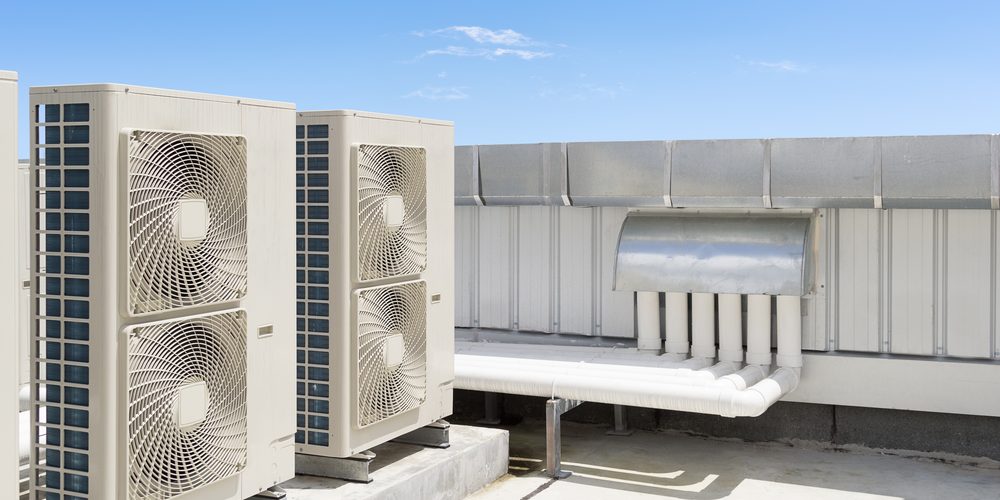1. What is VRV
Variable Refrigerant Volume (VRV) is an HVAC technology invented by Daikin Industries, Ltd. in 1982. Like ductless mini splits, VRVs use refrigerant as the cooling and heating medium. This refrigerant is conditioned by a single or multiple outdoor condensing units and is circulated within the building to multiple indoor units. VRV systems, unlike conventional chiller-based systems, allow for varying degrees of cooling in only certain areas, reducing energy consumption.
2. How does VRV work
VRV systems operate according to a refrigeration cycle in which a working fluid or refrigerant is circulated between an evaporator in each inside unit and a condenser in the outdoor unit. Heat is exchanged between the refrigerant and the indoor/ambient air in these components, allowing for heat to be “pumped” from one air mass to the other.
Heat transfer at the inside units is controlled by varying the refrigerant flow rate in the evaporators. The VRV branch selector allows for flow rate control at each inside unit and different heat loads can therefore be serviced simultaneously by each unit.
3. The reason you should choose VRV
The benefits of VRV systems relate largely to their flexibility. They provide rapid response to individual space heating/cooling requirements and can be used for simultaneous heating and cooling of separate zones. This ability makes it possible to use these systems for heat recovery from one zone to another, resulting in higher system efficiency.
VRV systems are far more flexible than traditional packaged or ducted HVAC systems (where a single outdoor unit circulates conditioned air or cold water throughout all zones of a building), offering individualized zone control and a high degree of decentralized controllability. VRV systems also eliminate the need for expensive ducting and offer higher efficiency than packaged HVAC systems due to the lower heat losses incurred during fluid transport between the outdoor and indoor units.



